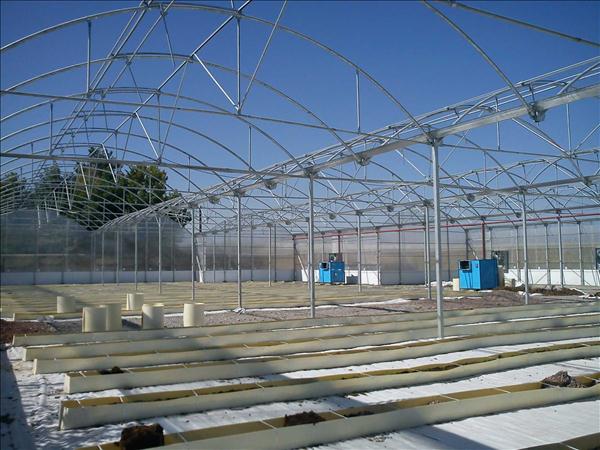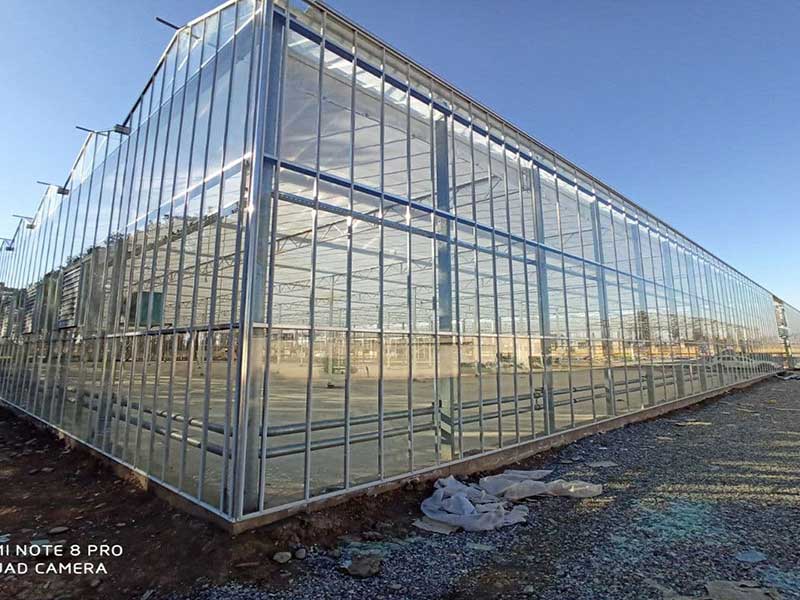Greenhouse training - types of greenhouses (part three)
In the third part of the greenhouse training series, we have classified the greenhouses, types of greenhouses, structural features and its practical points.
Types of greenhouses
Classification of greenhouses
Greenhouses can be divided into the following different types:
1) Permanent and temporary greenhouses (Types of greenhouses in terms of mobility)
2) Industrial and traditional greenhouses (types of greenhouses in terms of skeleton material)
3) Simple and compound greenhouses (types of greenhouses in terms of building shape)
4) Types of greenhouses in terms of temperature and humidity
1) Permanent and temporary greenhouses (types of greenhouses in terms of portability)
Permanent or permanent greenhouses: There are greenhouses that cannot be moved after construction. In the construction of these greenhouses, metal frames and glass cover have been used. The systems and facilities used in these greenhouses are permanent. Permanent greenhouse systems include drip irrigation systems and central heating systems such as radiators and ventilation valves connected to the thermostat.
Temporary greenhouses: These are greenhouses that can be moved. These types of greenhouses have a light and simple structure. The skeleton of these greenhouses is made of galvanized iron or rarely wood. Temporary greenhouses are usually covered with plastic. The skeleton of these greenhouses should be constructed in such a way that, if necessary, it can be collected or transferred to another location. In this type of greenhouses, temporary or permanent systems and facilities can be used.
2) Industrial and traditional greenhouses (types of greenhouses in terms of skeleton material):
Industrial greenhouses: These greenhouses are known as "plastic tunnels" or "quantum greenhouses". Industrial greenhouses with galvanized metal frames and plastic coatings along with heating, cooling and ventilation systems and equipment are known.
3) Simple and composite greenhouses (types of greenhouses in terms of building shape):
Simple greenhouses: Simple greenhouses are single and separate greenhouses.
Composite greenhouses: Combining several simple greenhouses creates a composite greenhouse.
A variety of simple greenhouses:
1.One-sided greenhouses
2. Semi-double sided greenhouses
3. Two-sided greenhouses
4. Curved greenhouses
1. One-sided greenhouses: One-sided greenhouses are usually built next to the wall. The northern wall is made of building materials and all eastern and western walls or part of it is made of brick. Its southern wall is shorter than its northern one. Therefore, the greenhouse has a sloping glass roof. The angle of the roof with the ground is between thirty and fifty degrees, and in general, the slope of the greenhouse depends on the latitude of the greenhouse. The further we move towards the pole, the more inclined the sunlight becomes, so we have to increase the slope, and the closer we get to the equator, the less slope we need. Thus in the Northern Hemisphere, the farther geographically from the equator, the more inclined the roof of the greenhouse will be. Sunlight should always shine obliquely to the roof of the greenhouse.
Note: One-sided greenhouses are mostly used to store houseplants or cuttings and to propagate plants and seedlings.
2. Semi-double sided greenhouses: In this type of greenhouse, the roof of the greenhouse consists of two sloping and uneven surfaces. The short slope is to the north and the long slope is to the south.
The short slope is 1/3 the width of the greenhouse and the long slope is 2/3.
The east and west walls can be up to 0.5 meters of brick and the rest of the glass.
Note: Semi-bilateral greenhouses are used for propagation and maintenance of plants.
3.Two-sided greenhouses: In these greenhouses, the roof consists of 2 ramps of the same size. Depending on whether the greenhouse is traditional or industrial and permanent or temporary, the skeleton of double-sided greenhouses can be selected from wood or galvanized pipe or metal can, and its cover can also be made of plastic or glass.
4. Curved greenhouses: Curved greenhouses are divided into the following two groups:
A: Quantum greenhouses (plastic tunnel greenhouses)
B: Gothic greenhouses (dome-shaped greenhouses)
A: Quantum greenhouses (plastic tunnel greenhouses): Quantum greenhouses are the same as plastic greenhouses. The most common greenhouse is for growing greenhouse plants. Cultivations such as cucumbers, tomatoes, peppers, eggplants, cut flowers, etc. are done in Quantum greenhouses.
Quantum greenhouses have been named according to the type of structure, style and also based on the roof vents:
Spanish greenhouses: The columns are made of 44X or 6X6 cans
Korean greenhouses: The roof of the greenhouse is almost domed.
Pigeon wing hatcheries
Bus roof hatch greenhouses
B: Gothic greenhouses (dome-shaped greenhouses): These types of greenhouses are temporary greenhouses and are mostly used to set up flower exhibitions. Gothic greenhouses are so named because of their dome shape.
2) Composite greenhouses: Combining several simple greenhouses together, regardless of the shape of the structure, creates a composite greenhouse. Depending on the type of halls and the air form created, they are named as follows
A: Finger Greenhouse: In this type of greenhouse, separate cultivation halls are placed next to each other, so that their entrance door opens and closes in a covered corridor. The advantage of this greenhouse is that less pollution enters the greenhouse and there is less waste in winter and also the required systems and equipment can be placed in this corridor.
B: Comb greenhouses: In this type of greenhouse, the halls are located on both sides of the main corridor and this corridor has the same features and advantages of the previous method.
Note: In comb greenhouses, we can do transplanting operations with a difference of 1 week or more to reduce the problem of interference.
C: Uphill greenhouses or atmospheres and ridges: The shape of these greenhouses can be seen as atmospheres and ridges, and it is created by the juxtaposition of several greenhouses whose interiors are interconnected.
Types of greenhouses in terms of temperature and humidity:
Greenhouses are divided into the following 4 categories based on temperature and humidity:
1) Warm greenhouse
2) Hot and humid greenhouse (reproduction)
3) Moderate greenhouse
4) Cool greenhouse


